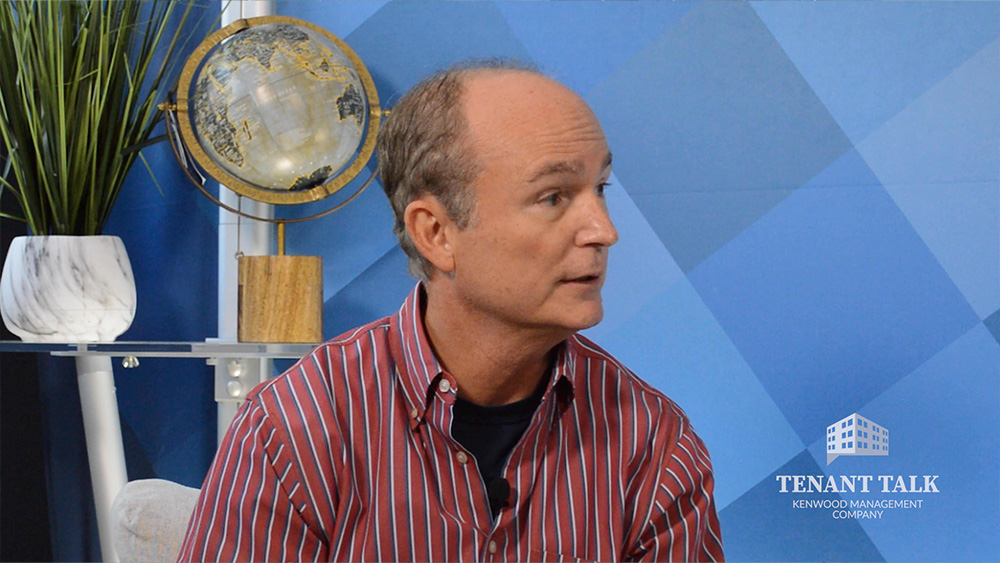Tenant Resources
Things All Small Businesses Need

No business can get off the ground and grow to new heights without proper plans set in place. In episode 4 of Tenant Talk, Kenwood Management Principal Bill Singer and Illumine8 CEO and Founder Christina May discussed some of the plans all small businesses need and how to put them into action. You can watch the full series on YouTube or listen to the podcast on Buzzsprout. Here’s a quick recap of episode 4, where we dive into the elements of a strong business plan.
Both Kenwood Management and Illumine8 benefited from a business plan that allowed them to build a strong foundation on which to grow their company. Bill created a business plan while completing his Master’s Degree in Real Estate and was then hired by Kenwood to implement it and help the company successfully get where it is today. Christina wanted to fill a need for family-owned businesses and created a plan to start Illumine8 as a marketing agency.
Both of them not only made a strong plan but also put it into action. “I think that’s where a lot of people stumble. They write the business plan and they put it on the shelf,” said Christina. However, a plan is never a one-and-done situation. “A plan needs to be updated periodically. It shouldn’t just be a static document. When circumstances change… you should modify that document,” said Bill.
Growth Plan: At every stage of your business, you are growing. A growth plan should be a part of your overall business plan. It not only looks at your growth goals in the next 5 or 10 years but also within the next year. Components of this plan include marketing, products/services, customers, revenue, and beyond. How are you going to expand your marketing efforts, the products you offer, or the customers you serve in the next 12 or 18 months?
OKRs: Objectives and Key Results (OKRs) is an excellent way to plan and measure your growth. The OKR method takes your goals and makes them manageable by setting measurable, attainable, and time-oriented objectives. Those objectives are supported by key results, which are clear yes-or-no steps you can take to achieve your goals. If your key result was to generate $800,000 in revenue but you only generated $500,000 then the answer is that you didn’t achieve your key result. There is no “somewhat” in a yes-or-no question.
Customer-Centric Plan: A customer-centric plan includes your marketing, sales, and customer communication into one. This is where you track how you’re finding qualified leads, how your customers are moving through your sales funnel, and how you are nurturing them once they’re through. Ultimately, your customer-centric plan is aimed at making a frictionless experience for your customers going through the funnel.
Measurement Technology: Technology is increasingly becoming accessible to small businesses. It allows you to measure the digital footprint left by customers to measure engagement, whether it’s reacting to a social post, reading an article, or opening an email. With the amount of information that can be tracked, you can identify qualified leads based on their engagement with your brand online.
Cash-Flow: Whether you’re non-profit or for-profit, you need sufficient funds to keep going and handle the rainy days. Understanding cash flow and leveraging debt is extremely important in enabling your decision-making. Whether it’s hiring a new employee or purchasing new equipment, you need to evaluate the return-on-investment for every decision you make.
If you’re looking for more valuable insights, the entire season of Tenant Talk is available on our YouTube channel! Or, listen to the podcast on Buzzsprout. In episode 5, we discuss how to ask for referrals.
